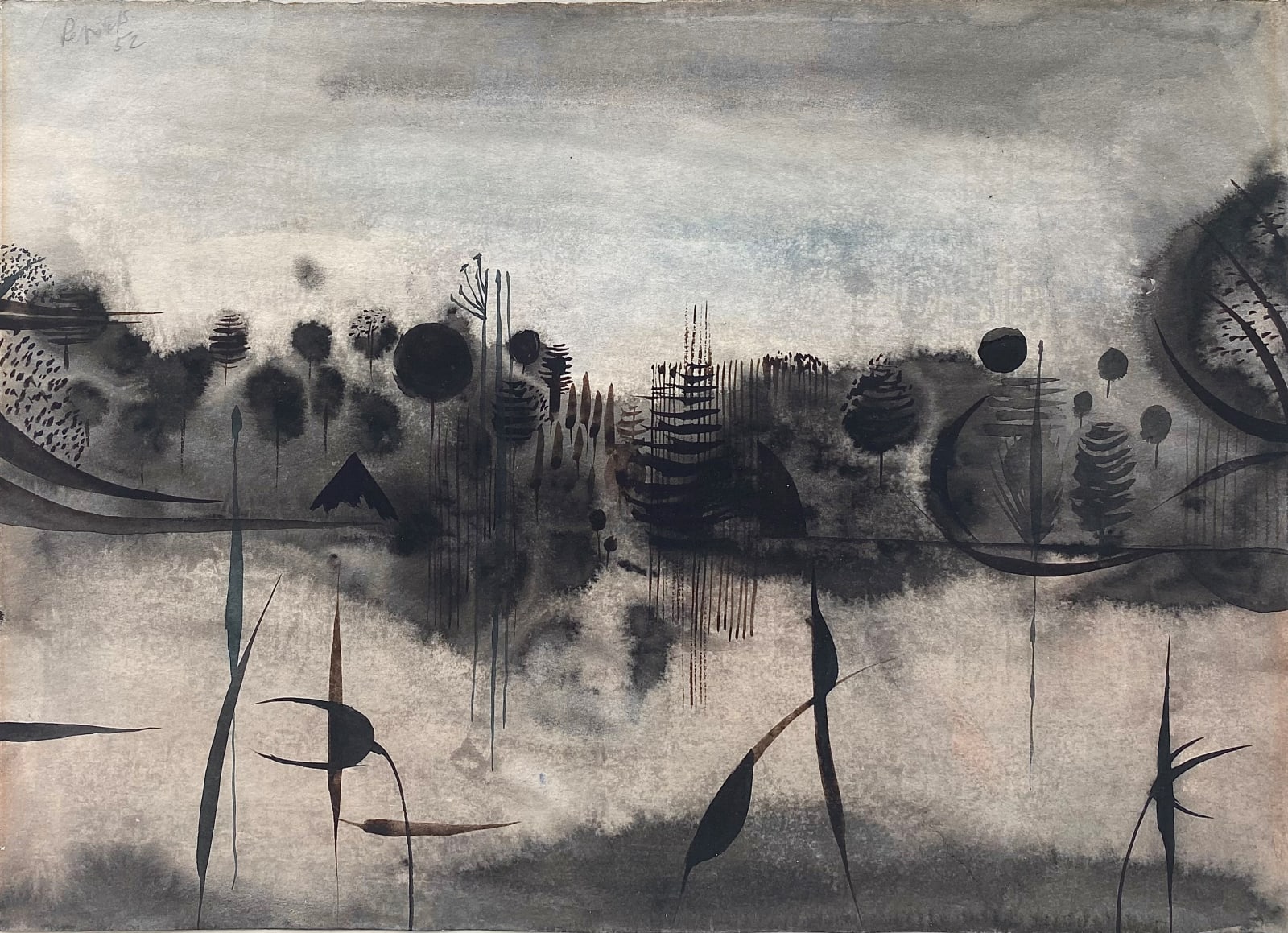Alan Reynolds
Hillside May Evening, 1952
Watercolour and ink on paper
10 3/4 x 15 in / 27.5 x 38 cm
Signed 'Reynolds/52' (upper left), inscribed 'Hillside May Evening' (on the reverse)
Despite having little formal training, Reynolds found great success from the beginning of his artistic career. Having left school to join the Army, Reynolds studied at Woolwich Polytechnic School of...
Despite having little formal training, Reynolds found great success from the beginning of his artistic career. Having left school to join the Army, Reynolds studied at Woolwich Polytechnic School of Art from 1947 until 1952, where his work was primarily influenced by his hometown of Suffolk and Kent. Upon graduating, Reynolds won a scholarship to the Royal College of Art (studying alongside Bridget Riley, Frank Auerbach and Leon Kossoff) and during his tenure received further recognition and awards for his painting, including his first solo exhibition at London’s Redfern Gallery. Reynolds left the RCA in 1953 and continued to garner much attention and success in the UK and internationally.
The present work, Hillside May Evening is a wonderful example of the artist’s paintings of the 1950s and 1960s. The deep admiration and wonderment that Reynolds’ felt for the countryside and agriculture that surrounded him alludes to the artworks of John Constable and Samuel Palmer, both of whom derived from the same area of England. By contrast, the spiked stems and geometric flower forms of the hop and corn fields show Reynolds’ post-war Neo-Romantic take on the landscape, infused with emotion and poetic mystery.
In this evocative landscape watercolour, we see the artist wrestling with the problem encountered by all landscape artists - that of creating perspectival depth when there is a dearth of detail in the sky and foreground. Here, the 'action' is contained within an abstracted central band of middle distance detail. This is linked to the foreground by organic forms, rendered in quick flicks of a brushstroke and reminiscent of both Chinese brush painting and Paul Klee, two important influences on the artist at the time. Reynolds' work in the early to mid 50s recalls the forms of the Geometry of Fear sculptors. His art changed gradually during the decade, from pure landscape to pure abstraction. Hillside May Evening shows the passage between these two visual languages.
The present work, Hillside May Evening is a wonderful example of the artist’s paintings of the 1950s and 1960s. The deep admiration and wonderment that Reynolds’ felt for the countryside and agriculture that surrounded him alludes to the artworks of John Constable and Samuel Palmer, both of whom derived from the same area of England. By contrast, the spiked stems and geometric flower forms of the hop and corn fields show Reynolds’ post-war Neo-Romantic take on the landscape, infused with emotion and poetic mystery.
In this evocative landscape watercolour, we see the artist wrestling with the problem encountered by all landscape artists - that of creating perspectival depth when there is a dearth of detail in the sky and foreground. Here, the 'action' is contained within an abstracted central band of middle distance detail. This is linked to the foreground by organic forms, rendered in quick flicks of a brushstroke and reminiscent of both Chinese brush painting and Paul Klee, two important influences on the artist at the time. Reynolds' work in the early to mid 50s recalls the forms of the Geometry of Fear sculptors. His art changed gradually during the decade, from pure landscape to pure abstraction. Hillside May Evening shows the passage between these two visual languages.
